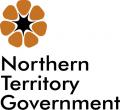identify
There are hundreds, perhaps thousands, of invasive species that have the potential to arrive and establish in any particular region or country. Identifying which species are more likely than others to invade and establish is extremely difficult, yet the capacity to do so is vitally important to the biosecurity of a nation.
Currently, government agencies consult industry stakeholders and technical experts, as well as published data to generate a pest risk assessment for a particular insect pest. While this can be valuable for many reasons, any estimate of risk is ultimately subjective. An alternative is to use a more quantitative modelling approach to generate more objective estimates of risk. One modelling approach is to utilise a Self Organising Map (SOM), which is a type of artificial neural network.
Research outcomes:
Self organising maps (SOM) are a useful tool for ranking species by their likelihood of establishment. We have tested this tool and found it to be both resilient to significant errors in the distributional data (up to 20%) and very reliable in its predictions of which species will and wont invade a region.
Research implications:
SOM would be a valuable tool to integrate into the current biosecurity practices. It could be used initially to screen a large number of potential invasive species down to a more manageable number. The rankings generated by SOM for this reduced list could then be included in the consultative process currently used to prioritise pest lists.
Acknowledgements:
The project team would like to thank the following government agencies for their gracious support of the project: Department of Agriculture, Fisheries and Forestry – Bureau of Rural Science; Department of Agriculture and Food Western Australia, Department of Primary Industries Victoria; the South Australian Research and Development Institute; New South Wales Department of Primary Industries; Northern Territory Department of Primary Industries, Fisheries and Mines; the Tasmanian Department of Primary Industries and Water; and the Queensland Department of Primary Industries and Fisheries.
We would like to acknowledge the help and advice of the following people and organisations: Richard Mack, Andy Sheppard, Paul De Barro, Matthew Thomas, CAB International, Tak Ikeda, Roger Magarey, Dan Fieselmann, Karl Suiter, Sharyn Taylor, Nadiah Kristensen, Simon Barry, John LaSalle, Marianne Horak, Rolf Oberprieler, Peter Gillespie, Bob Forrester, Alice Wells, Darren Kriticos, Felix Bianchi, Gary Fitt, Roger Shivas, Mike Watts, Greg Baker and Marc Poole.
Thank you very much to CRCNPB’s Delivery and Adoption Program and CSIRO Computational and Simulation Sciences Transformational Capability Platform for their generous support of the Technologies Enhancing Biosecurity Preparedness workshop held at the Rydges Lakeside Canberra Hotel on the 21st May 2009. We particularly thank John Taylor (CSIRO), Cain Roberts (CRCNPB) and Melanie Hay (CRCNPB) for their help in arranging the workshop. We would also like to thank all who participated and helped to make it a success, including Jeanine Baker (DAFF – BRS), Joanne Banyer (ABIN), Mike Cole (OCPPO), Andrew Copp (DEWHA), Daniel Fieselmann (USDA – APHIS), Neil Grant (DAFF – BA), Don Gunusekera (DAFF – ABARE), Takayoshi Ikeda (Lincoln University), Jon Knight (Imperial College London/PRATIQUE), Gwenael Leday (Lincoln University), Simon McKirdy (CRC NPB), Steve McMahon (ABIN), David Newth (CSIRO), Bill Roberts (DAFF – BA), John Sandow (CRC NPB), Andy Sheppard (CSIRO), John Taylor (CSIRO), Sharyn Taylor (PHA), Louise Van Meurs (DAFF – BA).
PROJECT LEADER

Dr David Cook
Project Leader CRC10001: Early Warning Threat Identification
david.cook@agric.wa.gov.au
Phone: 02 6246 4093
Fax: 02 6246 4000
Read More
PROJECT DETAILS
Complete
Term
December 2006 – November 2009
Budget
$764,371 (cash and in-kind support)









